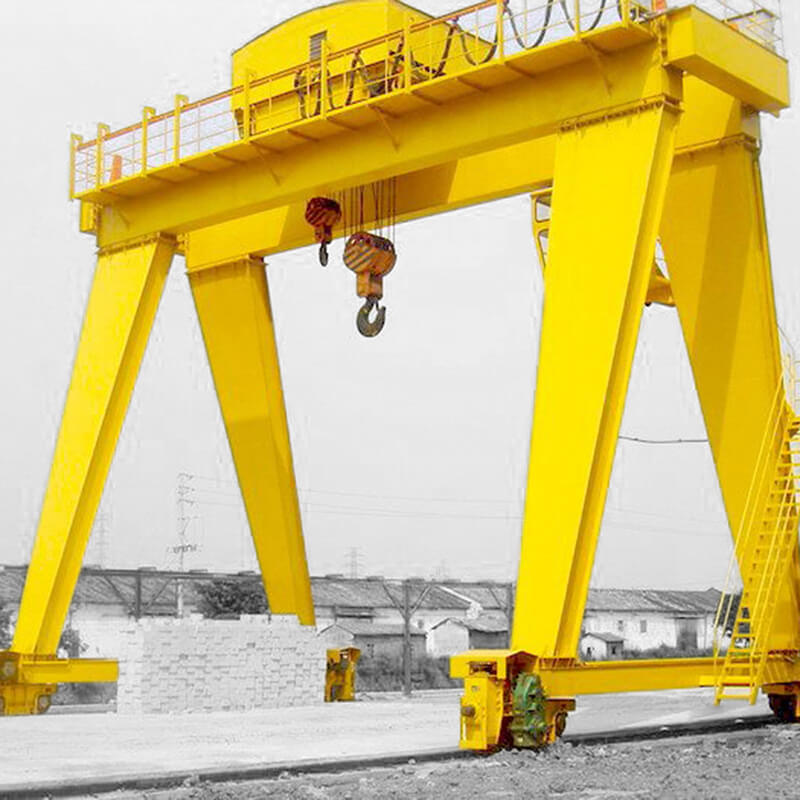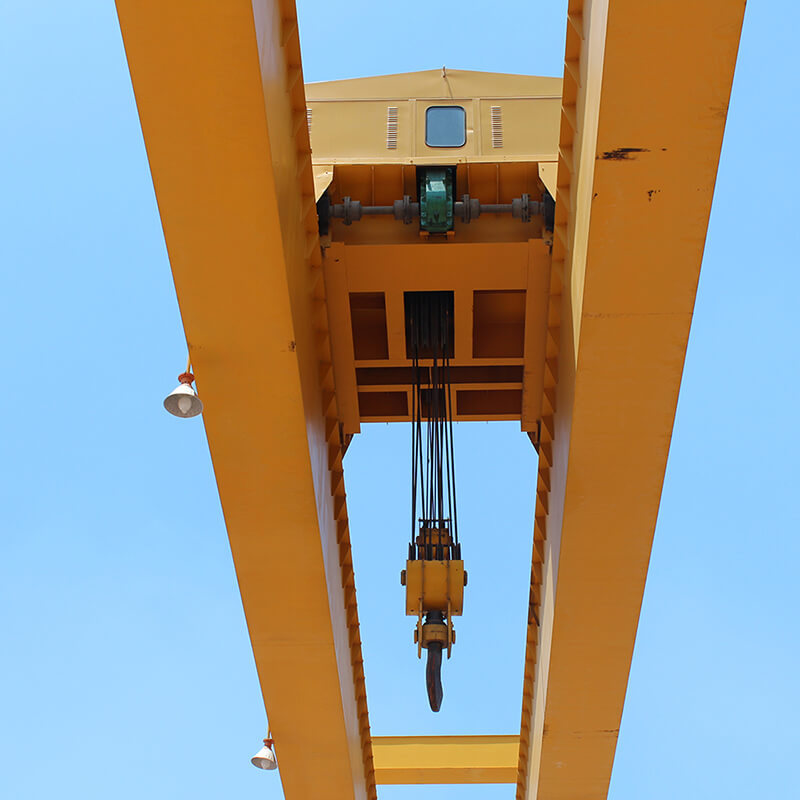
What are the structure and purpose of the gantry crane?
Everyone may be a little unfamiliar with gantry cranes. Cranes mainly include hoisting mechanism, operating mechanism, luffing mechanism, slewing mechanism and metal structure. The lifting mechanism is the basic working mechanism of the crane. Here is a brief introduction to the structure of the crane and the use of the gantry crane.

1. Crane structure:
The working mechanism includes: lifting mechanism, operating mechanism, luffing mechanism and rotating mechanism, which are called the four major mechanisms of cranes.
1. The lifting mechanism is a mechanism used to realize the vertical lifting of materials. It is any crane
An indispensable part, so it is the most important and basic mechanism of the crane.
2. The operating mechanism is a mechanism that realizes the horizontal transportation of materials through the operation of a crane or a lifting trolley. There are trackless operation and tracked operation. According to the different driving methods, it is divided into two types: self-propelled and traction.
3. The luffing mechanism is a unique working mechanism of jib cranes. The luffing mechanism changes the working range by changing the length and elevation angle of the boom.
4. The rotating mechanism is to make the boom rotate around the vertical axis of the crane to transport the moving materials in the annular space. The crane achieves the purpose of transporting materials through the single movement of a certain mechanism or the combined movement of multiple mechanisms.

2. Application form of gantry crane:
1. Ordinary gantry crane
This type of crane mostly adopts box-type and truss-type structures, and has the most extensive uses. It can transport all kinds of articles and bulk materials, with a lifting capacity of less than 100 tons, and a span of 4 to 39 meters. Ordinary gantry cranes with grab buckets have a higher level of work. Ordinary gantry cranes mainly refer to hook, grab, electromagnetic, hoist gantry cranes, and also include semi-gantry cranes.
2. Gantry crane of hydropower station
It is mainly used for lifting and opening and closing gates, and can also be used for installation operations. The lifting capacity is 80-500 tons, the span is small, 8-16 meters; the lifting speed is low, 1-5 meters/min. Although this kind of crane is not often lifted, it is very heavy once used, so the work level should be appropriately improved.
3. Shipbuilding gantry crane
Used for berth to assemble the hull, there are always two crane trolleys: one has two main hooks, which run on the track of the upper flange of the bridge; the other has a main hook and a secondary hook, which are on the lower flange of the bridge. It runs on the track in order to flip and hoist large sections of the hull. The lifting weight is generally 100-1500 tons; the span is 185 meters; the lifting speed is 2-15 m/min, and the micro-movement speed is 0.1-0.5 m/min.
4. Container Gantry Crane
Used in container terminals. After the trailer transports the containers unloaded from the quayside container carrying bridge from the ship to the yard or rear, they are stacked by the container gantry crane or directly loaded and transported away, which can speed up the turnover of the container carrying bridge or other cranes. A yard that can stack containers with 3 to 4 layers high and 6 rows wide is generally a tire type, but also a rail type. Compared with the container straddle carrier, the container gantry crane has a larger span and height on both sides of the mast. In order to meet the transportation needs of the port and wharf, the working level of this crane is relatively high. The lifting speed is 8~10m/min; the span is determined according to the number of container rows that need to be crossed, the maximum is about 60 meters, which corresponds to the lifting weight of 20-foot, 30-foot, and 40-foot containers, respectively, about 20 tons and 25 tons And 30 tons.


